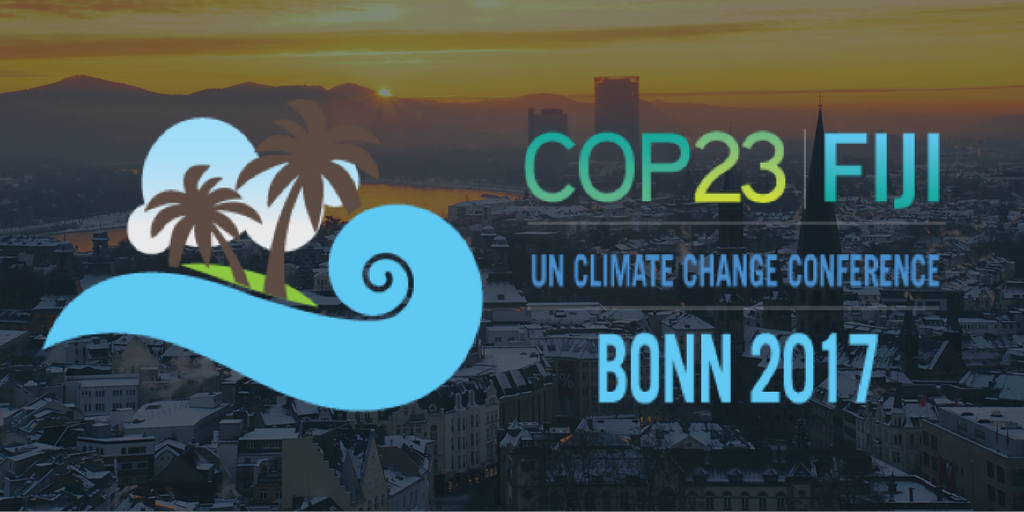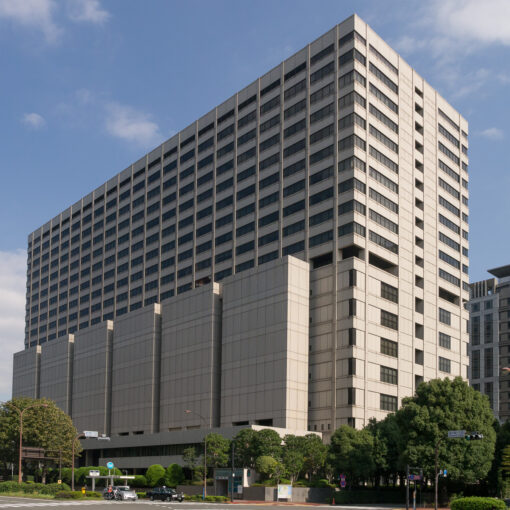By Romany Webb
 The 23rd Conference of the Parties (COP) to the United Nations Framework Convention on Climate Change (UNFCCC) is set to begin next Monday, November 6, in the city of Bonn in western Germany. The COP will bring together representatives of 194 countries for two weeks of talks on advancing the 2015 Paris Agreement. Much of the focus will be on continuing to develop guidelines on implementing the Paris Agreement, a process that began at COP22 last year and is due to be completed by COP24 in 2018.
The 23rd Conference of the Parties (COP) to the United Nations Framework Convention on Climate Change (UNFCCC) is set to begin next Monday, November 6, in the city of Bonn in western Germany. The COP will bring together representatives of 194 countries for two weeks of talks on advancing the 2015 Paris Agreement. Much of the focus will be on continuing to develop guidelines on implementing the Paris Agreement, a process that began at COP22 last year and is due to be completed by COP24 in 2018.
Implementation guidelines are required to be developed under various provisions of the Paris Agreement, including Article 6, which provides for international cooperation on actions to mitigate climate change. The Article identifies several possible “cooperative approaches,” including market-based approaches involving carbon trading. Article 6.2, for example, indicates that parties may “use . . . internationally transferred mitigation outcomes” (ITMOs) to meet their carbon reduction goals. This has the potential to benefit developing countries, leading to increased funding for their climate change mitigation projects. Care must, however, be taken to ensure that mitigation projects do not adversely affect local communities or infringe on individuals’ human rights. To avoid this outcome, it is vital that any guidelines developed under Article 6 of the Paris Agreement recognize the importance of protecting human rights when engaging in cooperative approaches, and include safeguards designed to achieve that goal.
Existing cooperative approaches – i.e., those developed prior to adoption of the Paris Agreement – incorporate few human rights safeguards. Consider, for example, the Clean Development Mechanism (CDM) established under the 1997 Kyoto Protocol. The CDM allows developed countries to meet their commitments under the Kyoto Protocol by funding emission reduction projects in developing countries. CDM rules require consultation with local communities prior to project development, but do not impose any other substantive requirements to protect their rights. Given this, it is perhaps unsurprising that many projects funded through the CDM have been shown to result in serious human rights abuses, including the forced displacement of vulnerable communities. CDM-funded hydroelectric and biofuels projects, in particular, have displaced indigenous peoples and destroyed the ecosystems upon which they depend.
Under the Paris Agreement, the CDM is set to be replaced by a new climate finance tool, known as the Sustainable Development Mechanism (SDM). Established in Article 6.4 of the Paris Agreement, the SDM is intended to “promote the mitigation of greenhouse gas emissions while fostering sustainable development.” The term “sustainable development” is not defined in the Paris Agreement, but is widely seen as requiring the protection of human rights. In this regard, various commentators have noted that human rights were incorporated into many of the Sustainable Development Goals, adopted under the 2030 Agenda for Sustainable Development. Consistent with this view, in October 2016, the Sabin Center filed a submission with the UNFCCC urging it to incorporate human rights safeguards into the SDM. (A blog post on our submission is available here.)
Human rights safeguards should also be incorporated into the new ITMO framework under Articles 6.2 and 6.3 of the Paris Agreement. Those provisions establish a “bottom up” approach, whereby mitigation outcomes, such as emissions credits, resulting from country-level programs may be transferred internationally, at which point they become ITMOs. ITMOs may also result from new or existing international mechanisms, such as the Reducing Emissions from Deforestation and Forest Degradation (REDD+) program. (Briefly, by way of background, REDD+ was established by the parties to the UNFCCC and is continued under Article 5 of the Paris Agreement. It provides developing countries with results-based payments for actions to reduce or eliminate forest carbon emissions. While such actions are important to mitigate climate change, concerns have been raised about their impact on indigenous groups and other stakeholders, who may be forced from their land and/or have their livelihoods affected.)
Article 6.2 of the Paris Agreement requires parties, when using ITMOs, to “promote sustainable development and ensure environmental integrity.” How this will be achieved remains uncertain, however. Much will depend on how the ITMO framework is implemented which is, itself, still the subject of considerable debate among the parties to the Paris Agreement. For example, while Article 6 of the Agreement envisages the development of guidance on the use of ITMOs, the parties remain at odds over what that guidance should cover and how it should be enforced. In particular, should the guidance include provisions aimed at ensuring transfers promote sustainable development and ensure environmental integrity, as required by Article 6.2? If so, will the COP or another central body be responsible for verifying that these requirements are met? And what consequences will flow from a determination that the requirements are not met?
Some commentators have suggested that the COP or another central body may be authorized to review mitigation outcomes prior to transfer. If this approach is taken, the body should use its authority to require programs and projects generating mitigation outcomes to incorporate human rights safeguards, and prevent the transfer of outcomes generated through programs / projects lacking such safeguards. Based on our prior work on climate change and human rights, and drawing on experiences with the CDM and other similar mechanisms, we recommend that the safeguards require project proponents to:
- consult with affected communities and individuals during project planning, development, and implementation;
- obtain free, prior, and informed consent from any indigenous peoples potentially affected by the project;
- avoid adverse effects on people and the environment and take steps to mitigate any unavoidable adverse effects (particularly the displacement of local communities);
- engage with the affected community when determining appropriate measures to mitigate adverse effects; and
- periodically monitor and report on compliance with environmental and social safeguards (preferably through a third-party).
Ensuring these safeguards are observed will be more difficult if no central body is responsible for overseeing the use of ITMOs. In this situation, national governments will need to take the lead, and ensure that appropriate safeguards are incorporated into programs / projects under their authority. Any international mechanisms that will operate in association with the ITMO framework must also incorporate appropriate safeguards. Thus, for example, new safeguards will need to be incorporated into REDD+ to ensure that forestry-related projects are undertaken in a manner that protects human rights. Otherwise, such projects may benefit the climate, but harm local communities. As the United Nations Special Rapporteur on Human Rights and the Environment has recognized, this “will result in controversy that can derail projects [and] call into question entire mechanisms,” thus threatening advancement of the Paris Agreement.





